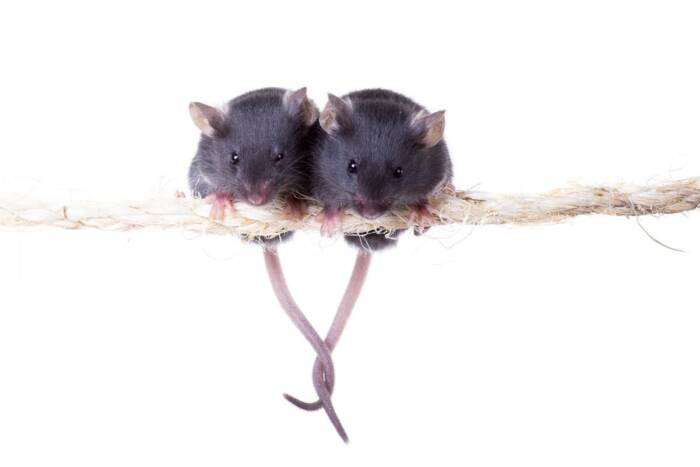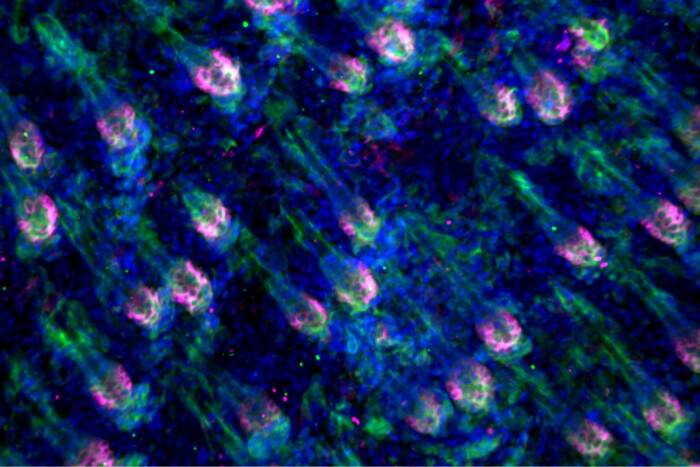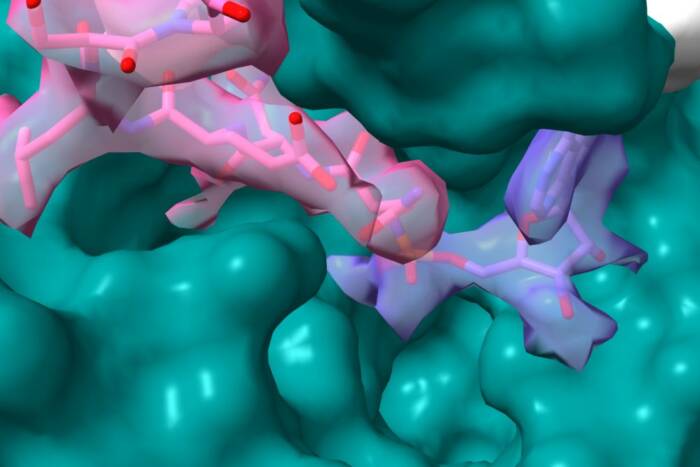400 High School Students Attack Foreign Invaders!: RU Mirsky Lecture on the Body's Immune Response
When a foreign invader such as a harmful bacterium, virus, fungus or parasite assaults the body, the immune system comes to the rescue by launching a cellular attack. Yet, some substances, such as cancerous growths, can elude the body’s intricate detection system. Why? On Monday, December 28, from 10:30 a.m. to 3:00 p.m., one of the leaders in the field of immunology will share his latest research with 400 area high school science students at the 39th Annual Alfred E. Mirsky Christmas Lecture Series on Science, The Rockefeller University, Caspary Hall, 1230 York Avenue (at 66th Street). Student attendance is by ticket only. Press coverage is invited.
“Recent advances in immunology have led to a better understanding of a number of human diseases,” says Professor Michel Nussenzweig, M.D., Ph.D., head of The Rockefeller University Laboratory of Molecular Immunology and an associate investigator at the Howard Hughes Medical Institute. “I hope to give the students an understanding of how the immune system can both fight off foreign invaders and in other instances cause self-destructive diseases.” Nussenzweig’s research focuses on understanding the development and function of the cells in the immune system – a system that only vertebrates have. His lab at Rockefeller uses a combination of biochemical, molecular and genetic approaches, which allows lab members to analyze the function of specific genes in the context of the living organism. Nussenzweig earned his Ph.D. at The Rockefeller University in 1981. A year later, he received his M.D. from New York University School of Medicine.
“Antibodies and Genes,” at 10:30 a.m., is the first of two lectures that will explore the immune system’s ability to recognize almost any type of invading foreign material and the molecular mechanisms that generate antibody diversity. B lymphocytes are designed to recognize this threatening world of potential invaders and are capable of producing antibody molecules with an almost limitless variety of specificities. Once generated, these antibodies may either seek out and directly destroy an antigen – the molecular signature of microbial or viral invaders – or label it so that a white blood cell, or macrophage, can engulf and remove the intruder from the body.
By the late 1960s, it had become clear through scientific investigation that stem cells, primitive cells that develop into specialized cells, give rise to all blood cells including two broad groups of lymphocytes: B cells and T cells. The day’s second lecture, “B Cell Development and the Antibody Response,” at 1:30 p.m., will focus on B lymphocyte development. B cells, which are derived from maturing bone marrow stem cells and produce antibodies that bind to extracellular pathogens such as bacteria and mark them for attack by other cells, are distributed by the blood and make up 20 to 30 percent of the circulating lymphocytes.
Lymphocytes continuously circulate through the body’s vascular and lymphatic systems, stopping periodically in the lymphoid organs (lymph nodes and spleen) as they patrol for foreign invaders. In contrast to B lymphocytes, T cells, which arise in the thymus and comprise 70 to 80 percent of the circulating lymphocytes, can handle such intracellular pathogens as viruses in addition to such intracellular parasites as tuberculosis. T cells also secrete molecules known as lymphokines, which direct the activity of B cells, other T cells and other parts of the immune system.
All lymphocytes are studded with sensitive cell-surface receptors, organs of touch so subtle and precise that they can detect changes at the level of a single atom. The receptors on the surface of B lymphocytes are much like those on T cells – each set of receptors is genetically programmed to recognize a different bit of bacteria or pathogens. But B cells can also produce quantities of antibodies, receptor-like molecules that are free to move out of the cell since they lack an anchor in the cell membrane. When a B cell grabs hold of an antigen and gets “turned on,” it divides and differentiates into a plasma cell, which churns out millions of these identical, foe-specific molecules and releases them into the bloodstream, where they can latch onto viruses, bacterial proteins and toxins.
The Mirsky Christmas Lectures were established in 1959 by the biochemist and RU librarian who modeled the series on a popular program of science lectures for children started in London in 1827 by the legendary experimenter, Michael Faraday. Since 1974, when Mirsky died, the series has been funded through an endowment provided by his widow, Sonya Wohl Mirsky. Each year, a lecturer is chosen from among the university’s top faculty to provide high school students with a level of mentoring normally reserved for the nation’s best graduate students who are pursuing Ph.D.s at Rockefeller, one of the nation’s most selective biomedical research programs.
Rockefeller began in 1901 as The Rockefeller Institute for Medical Research, the first U.S. biomedical research center. Rockefeller faculty members have made significant achievements, including the discovery that DNA is the carrier of genetic information and the launching of the scientific field of modern cell biology. The university has ties to 19 Nobel laureates. Thirty-two faculty members are elected members of the U.S. National Academy of Sciences, including President Arnold J. Levine, Ph.D.


